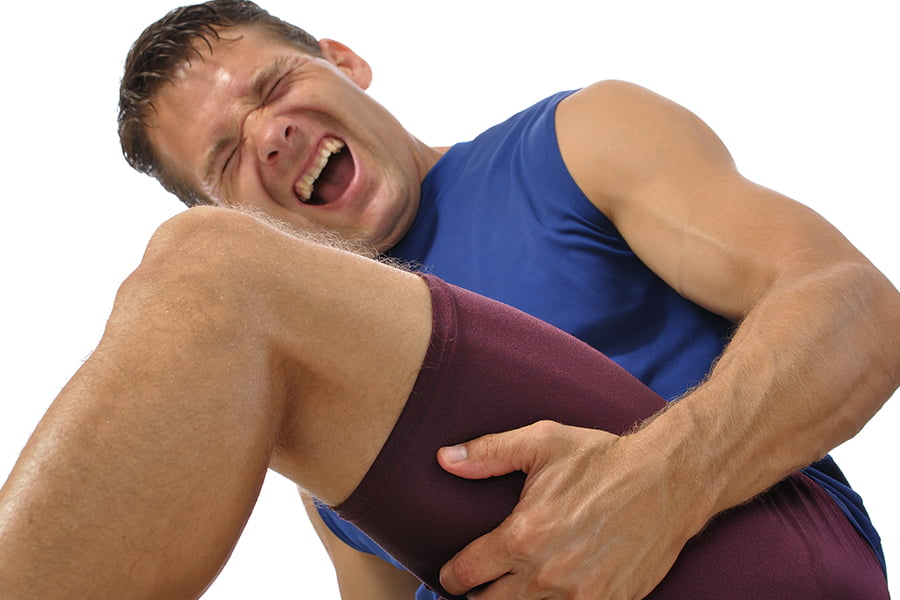
Hamstring injuries sideline many an athlete. The hamstrings are the big group of muscles and tendons in the back of the thigh. Injuries in this powerful muscle group are common. Though these injuries can be very painful, they will usually heal on their own. However, for an injured hamstring to return to full function, it needs special attention and a specially designed rehabilitation program.
When the hamstring is injured, the fibers of the muscles or tendon are actually torn. The body responds to the damage by producing enzymes and other body chemicals at the site of the injury. These chemicals produce the symptoms of swelling and pain.
Hamstring injuries happen when the muscles are stretched too far, usually during heavy exercise. Sprinting and other fast or twisting motions with the legs are the major cause of hamstring injuries.
The hamstring may be pulled, partially torn, or completely torn. Hamstring injuries rarely need surgery. For minor muscle pulls, you may need two to four weeks’ rest before you can safely return to your activities. For more severe muscle tears, you may need rehabilitation for two to three months, with complete healing occurring by four to six months.
For the first three to five days after hamstring injuries, the main goal of treatment is to control the swelling, pain, and hemorrhage (bleeding). Hamstring injuries are initially treated using the RICE method. RICE stands for rest, ice, compression, and elevation. Your doctor may also prescribe a short course of nonsteroidal anti-inflammatory drugs (NSAIDs), such as ibuprofen, to help relieve the pain.
As your hamstrings begin to heal, it is critical that you follow an exercise program to regain your strength and mobility. Specially designed exercises encourage your body to rebuild muscle instead of scar tissue. Stretching will be a key feature of your rehabilitation program.
Most hamstring injuries get better with treatment and rehabilitation. Even world-class athletes with severe hamstring injuries are usually able to return to competition. By keeping the hamstrings flexible and giving the body time to heal, you should be able to return to the activities you enjoy.
For more information on this subject, call The Zehr Center for Orthopaedics at 239-596-0100 or visit www.zehrcenter.com. The information contained herein is compiled from a variety of sources. It may not be complete or timely. It does not cover all diseases, physical conditions, ailments, or treatments. The information should NOT be used in place of a visit with your healthcare provider, nor should you disregard the advice of your health care provider because of any information you read on this topic.